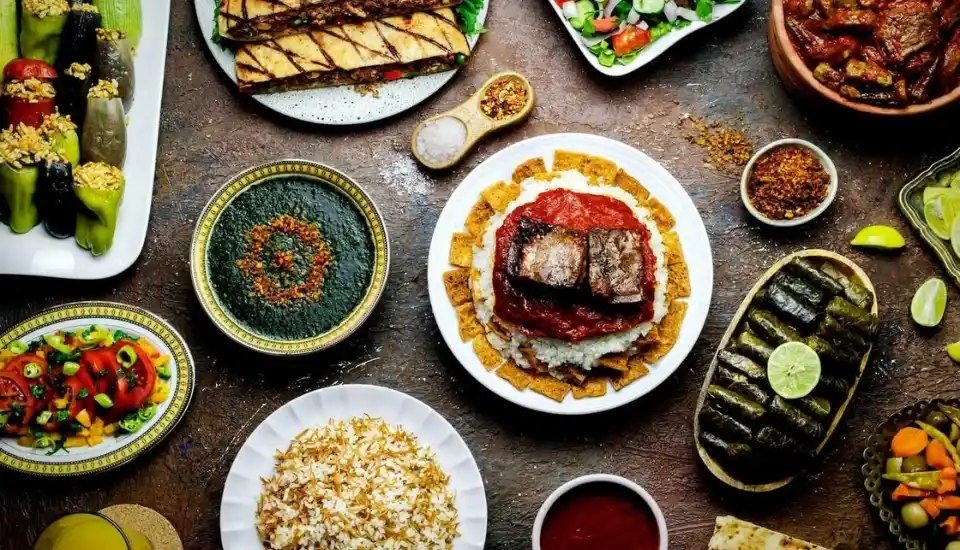Embarking on a journey to Egypt is an immersive experience, a plunge into millennia of history, breathtaking architecture, and a vibrant cultural tapestry. Crucially, no such odyssey is complete without a thorough exploration of its rich and diverse culinary offerings. Egyptian cuisine, often characterized by its hearty, flavorful, and frequently vegetarian-friendly dishes, reflects the nation’s diverse heritage, drawing influences from its Pharaonic past, Ottoman rule, and Mediterranean neighbors. For the discerning traveler, understanding these gastronomic nuances and approaching them with informed curiosity is key to a truly fulfilling sojourn.

The Staples of Egyptian Sustenance: A Foundation of Flavor
Egyptian food is deeply rooted in accessible, nourishing ingredients, with legumes, grains, and fresh produce forming the bedrock of many traditional meals. These foundational elements contribute to a cuisine that is both profoundly satisfying and remarkably versatile.
The Ubiquitous Ful Medames and Ta’ameya
No discussion of Egyptian food can commence without reverential mention of Ful Medames (fava beans) and Ta’ameya (Egyptian falafel). These two stalwarts are more than just dishes; they are integral to the daily rhythm of Egyptian life, particularly at breakfast. Ful Medames consists of slow-cooked fava beans, typically mashed or left whole, seasoned with olive oil, garlic, lemon juice, and often a sprinkle of cumin. It is a protein-rich, fortifying meal that can sustain one for hours, frequently served with aish baladi (Egyptian flatbread) for scooping.
Ta’ameya, the Egyptian rendition of falafel, distinguishes itself by its primary ingredient: fava beans, rather than the chickpeas more commonly used in other Middle Eastern variations. The ground fava beans are mixed with fresh herbs like parsley and coriander, along with onions and a medley of spices, before being deep-fried to a delightful crispness on the exterior and a tender, verdant interior. Often served in aish baladi with tahini sauce and fresh salad, Ta’ameya offers a delightful textural and flavor counterpoint to the creamy ful. These are quintessential street food experiences, found at countless bustling stalls throughout Egyptian cities.
Delving Deeper: From Hearty Mains to Sweet Denouements
Beyond the breakfast essentials, Egyptian cuisine unfolds into a spectrum of savory main courses and delectable desserts, each telling a story of regional traditions and historical influences.
Koshary: The National Culinary Emblem
Koshary is arguably Egypt’s most iconic dish, a truly unique amalgamation that beautifully exemplifies the country’s culinary ingenuity. It is a hearty, vegetarian, and eminently satisfying concoction of rice, macaroni, lentils, and chickpeas, all layered together and then crowned with a tangy tomato sauce, garlic vinegar (da’a), a fiery chili sauce (shatta), and crispy fried onions. The genius of koshary lies in its textural symphony and the interplay of its various components, each contributing a distinct element to the grand ensemble. It is a dish that transcends social strata, enjoyed by everyone from street vendors to affluent diners, and a must-try for any visitor.
For those with an inclination towards meat, Hawawshi offers a compelling street food experience: spiced minced meat, often beef or lamb with onions and peppers, baked within two layers of aish baladi until the bread is wonderfully crisp and infused with the meat’s savory juices. Another notable meat dish is Hamam Mahshi, stuffed pigeon, a delicacy often reserved for special occasions. The plump squab is typically filled with spiced rice or freekeh (cracked wheat) and roasted to perfection.
Navigating the Culinary Labyrinth: Practical Considerations
While the prospect of savoring authentic Egyptian fare is alluring, it is prudent to approach certain aspects of food consumption with circumspection to ensure a seamless and healthy journey.
Hydration and Hygiene: Imperatives for the Traveler
Maintaining proper hydration is paramount in Egypt’s arid climate. While tap water is generally not recommended for direct consumption, readily available bottled water is ubiquitous. Always ensure that bottled water seals are intact to prevent any untoward incidents. When it comes to street food, a general maxim to adhere to is “peel it, cook it, or forget it.” Opt for freshly cooked items, observe the hygiene practices of vendors, and choose stalls with high customer turnover, indicating freshness. Raw vegetables, unless thoroughly washed in purified water, should be approached with caution.
Food allergies should also be communicated clearly. While the use of peanuts might not be as widespread as in some Asian cuisines, tree nuts (such as almonds in desserts like Basbousa) and other common allergens like eggs, fish, and dairy are prevalent. Learning a few key Arabic phrases for your specific allergies can prove invaluable.
Beverages and Sweet Endings: A Concluding Flourish
Beyond the sustenance, Egypt offers a delightful array of beverages and desserts. Tea, particularly black tea, is the national drink and a pervasive element of social interaction. Karkadeh (hibiscus tea), served both hot and cold, offers a tart and refreshing counterpoint, while Aseer Asab (sugarcane juice) provides a sweet, immediate burst of energy. In winter, Sahlab, a warm, milk-based drink thickened with orchid flour and often topped with nuts and coconut, provides comforting warmth.
For dessert aficionados, the options are plentiful and often syrup-drenched. Basbousa, a sweet semolina cake soaked in syrup, often perfumed with rosewater or orange blossom, is a rich and satisfying treat. Konafa, a shredded phyllo pastry often filled with cream or nuts and drenched in syrup, offers a delightful textural contrast. And then there’s Om Ali, Egypt’s answer to bread pudding, featuring layers of pastry, milk, nuts, and raisins, baked until golden and bubbling. These sweet finales provide a perfect conclusion to an authentic Egyptian meal.
By embracing these suggestions, travelers can confidently navigate the exhilarating culinary landscape of Egypt, transforming their journey into a veritable feast for the senses and a profound engagement with the country’s delectable heritage.